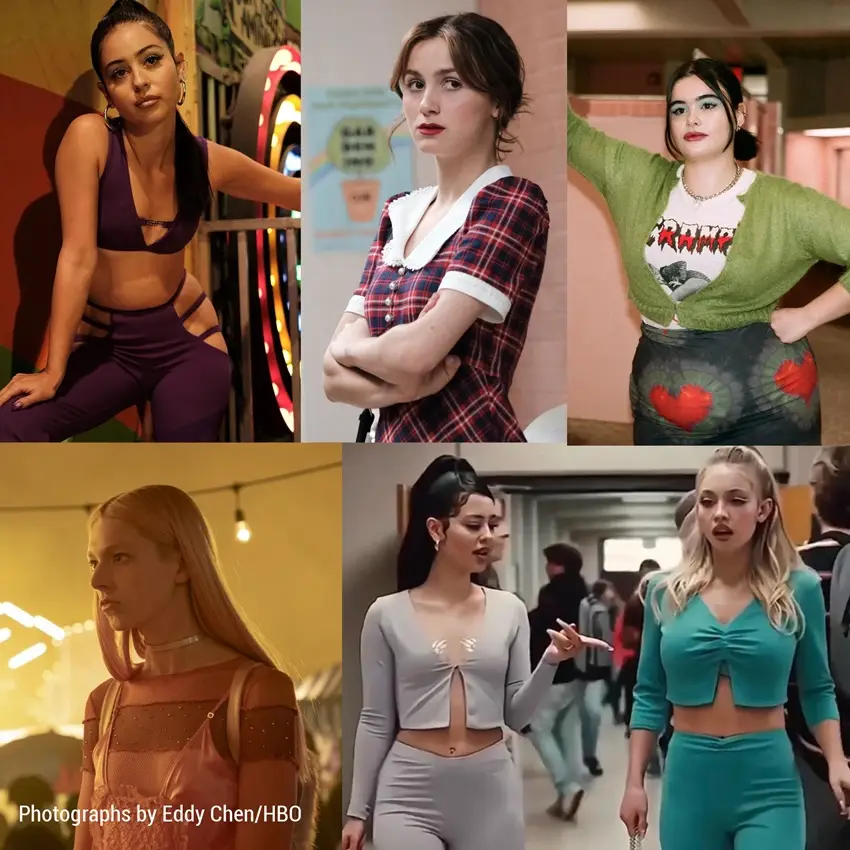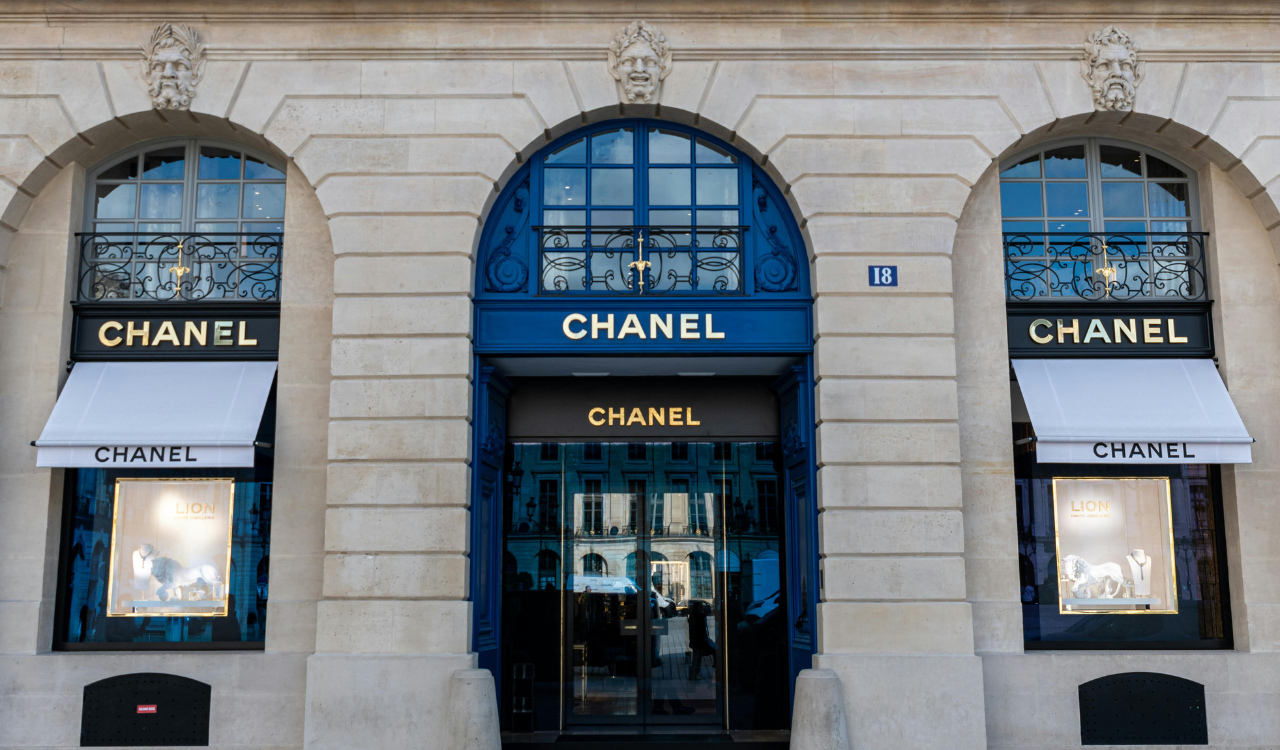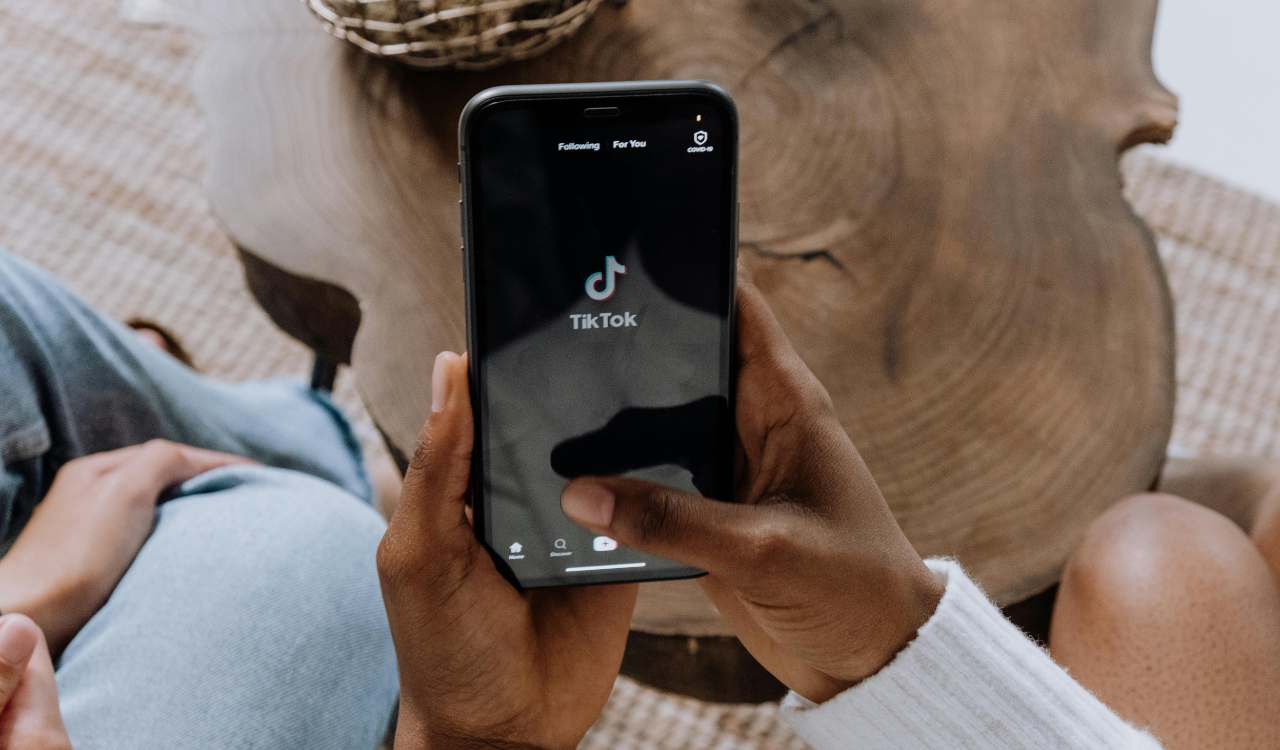It doesn’t get any cooler than HBO’s hit show Euphoria. With high school age characters in no-holds-barred scenarios, the series follows the life of a teenage drug addict named Rue, played by Zendaya. The cast features a diverse array of LGBTQ+ characters of various ethnicities, body types, and gender orientation. But beyond that, Euphoria has singlehandedly urged an entire generation to take bigger fashion risks and abandon dated rules about what to wear for their body type.
Unlike most teens on TV dramas, Euphoria high schoolers aren’t bullying anyone to dress a certain way. Attendees of Euphoria high school have bigger fish to fry reflecting teens today, who are coming of age on a burning planet during a global pandemic.
The fashion industry is no longer top-down. Next gens aren’t waiting for Victoria’s Secret, Abercrombie & Fitch, Express, etc. to tell them what to wear. Instead, we have cutting-edge costume designers interfacing with cultural (and street) icons to create innovative looks that reflect the current state of the world.
So, how do the fashions worn by the characters of Euphoria, now in its second season, differ from those worn by characters of benchmark teen dramas of the past? And what particular items should you expect to see surge in sales as a result? Let’s delve in.
Iconic Next Gen Fashions Inspired by the 90s/00s
Generation Z is all about making an impact with their ensembles. There’s little as ironic for elder millennials like myself than watching Generation Z teens scramble to look like we did in the early aughts. My generation solemnly swore that low rise jeans would never make a comeback, and now there’s nothing we can do to stop it. But we can’t blame all the fashions from the 2000-and-later on Generation Z.
After all, we have to leave a little blame for Heidi Bivens, the lead costume designer for Euphoria seasons one and two. Bivens is no small deal in her own right with 97.8k Instagram followers. Bivens says that Rue’s love interest Jules’s look was originally based on anime characters. However, Bivens’ team had a hard time finding trans girls that were also fashion icons on which to base the character’s style.
As such, Jules’ schoolgirl skirts and teddy bear core aesthetic in the first season were inspired by a hybrid of anime characters and Hunter Schafer’s –– the actress who plays Jules –– real life fashion looks. Does life imitate art, or does art imitate life? In this case, art imitates life. Bivens made it a priority to dress the characters of Euphoria like the real people she saw walking the streets. Like real people, their styles evolve over time. Unlike real people, however, one outfit worn on the hip HBO drama can influence global category sales for similar fashions.
Bivens chose technicolor tops and chokers for Jules’ character for the first season. However, in season two, Jules’ character gravitated towards looser silhouettes as she grew into herself and began to look inward.
Characters Demonstrate Growth Through Fashion
When following the influence of a leading teen drama on the fashion industry at large, you’ll quickly notice that the characters’ fashion sense influences the preferences of an entire fashion industry. As the characters’ personal styles evolve, so do those of the customers trying to emulate them.
You can especially see this character arc in how the character Maddy Perez’s personal style evolved into darker, more severe outfit choices to mirror the betrayal happening in her personal life between her best friend, Cassie, and boyfriend, Nate. Suddenly, high schoolers from Kentucky to New York City are dressing like they’re thrice divorced.
Perhaps the most famous of Maddy’s fashion iterations were the black UO I.AM.GIA flares with cutout hips and bra top that she wore when dumping Nate. As expected, the originals are completely sold out. But many, many overseas fast fashion brands have created their own versions.
A Carnival of Self-Acceptance and Maximalism
A few key factors contribute to making Euphoria the groundbreaking series that it is today. The show serves up maximalism on every level, from the extreme situations in which the characters find themselves, to iconic fashion moments like Rue’s glitter tears. Bivens’ goal in creating the looks for Euphoria was in keeping with next gen consumers’ fashion proclivities. She didn’t want to create a new fashion template for next gen consumers to follow. Instead, she showed them how to throw out the template altogether.
Heidi Bivens told Harper’s Bazaar, “I hope the show encourages people to use fashion as a form of self-expression – that excites me. It is definitely something I have noticed, from season one to two, that – on social media at least – there is a lot more individuality among young people, and I really hope the show has inspired that.”
On the rare occasion that you do see fashion conformity in Euphoria, the conformity itself is also a statement. When Maddy and Cassie wore matching cardigan and pant outfits, for instance. By matching so brightly, the (once) best friend duo created a more standout visual than by dressing differently. Conformity only works for next gens when it’s more attention-grabbing than blending in.
We’d be remiss if we didn’t also mention the makeup component. The characters of Euphoria high school wear bold eye glitter for everyday use. Obviously, high schoolers are all over this one. Euphoria is doing for eye glitter what J.Crew did for sequins back in the day –– making it acceptable for daily use. This time it’s just glittering eyelids, instead of J.Crew’s glittering blazers of the early aughts.
Final Thoughts
Welcome to an era where everyone is an icon. Like the unknown “regular” people who inspired the looks in Euphoria, the shows cast members are influencers in their own right. Euphoria actors took over Fashion Month, taking front row seats at Balenciaga, Bottega Veneta, Prada, and many others. Actors also participated in the festivities for brands like Coach, Rodarte, Laquan Smith, Thom Browne, and more.
Understand this: The fashion industry is no longer top-down. Next gens aren’t waiting for characters like Leslie Wexler –– the billionaire behind Victoria’s Secret, Abercrombie & Fitch, Express, etc. in the early aughts –– to tell them what to wear. Instead, we have cutting-edge costume designers interfacing with cultural (and street) icons to create innovative looks that reflect the current state of the world –– not a problematic, hyper-sexualized interpretation of how teens should dress. It’s just one of the tangible fringe benefits of the #metoo movement and evolving online discourse. And it’s just one of the reasons I’m so proud of the next generation. Onward.





